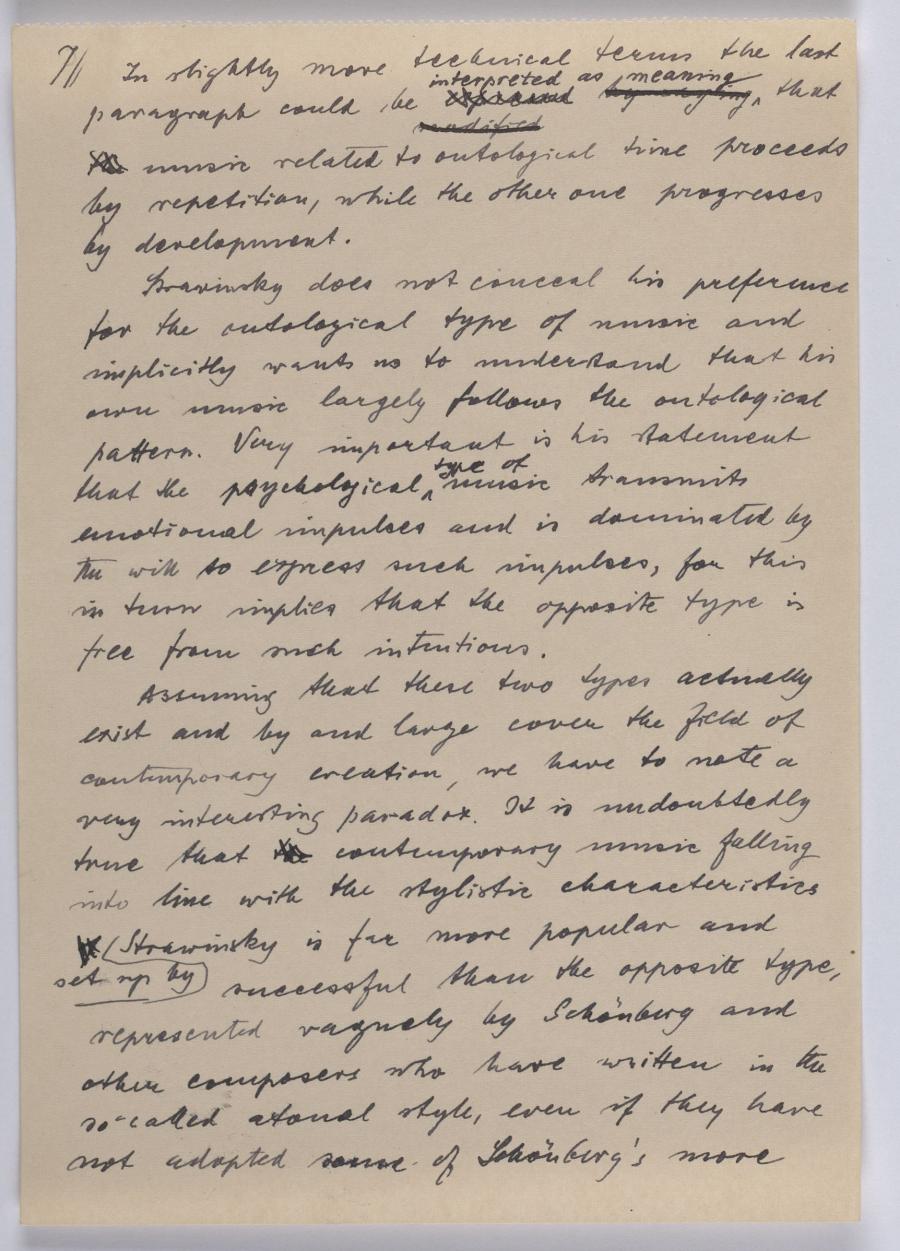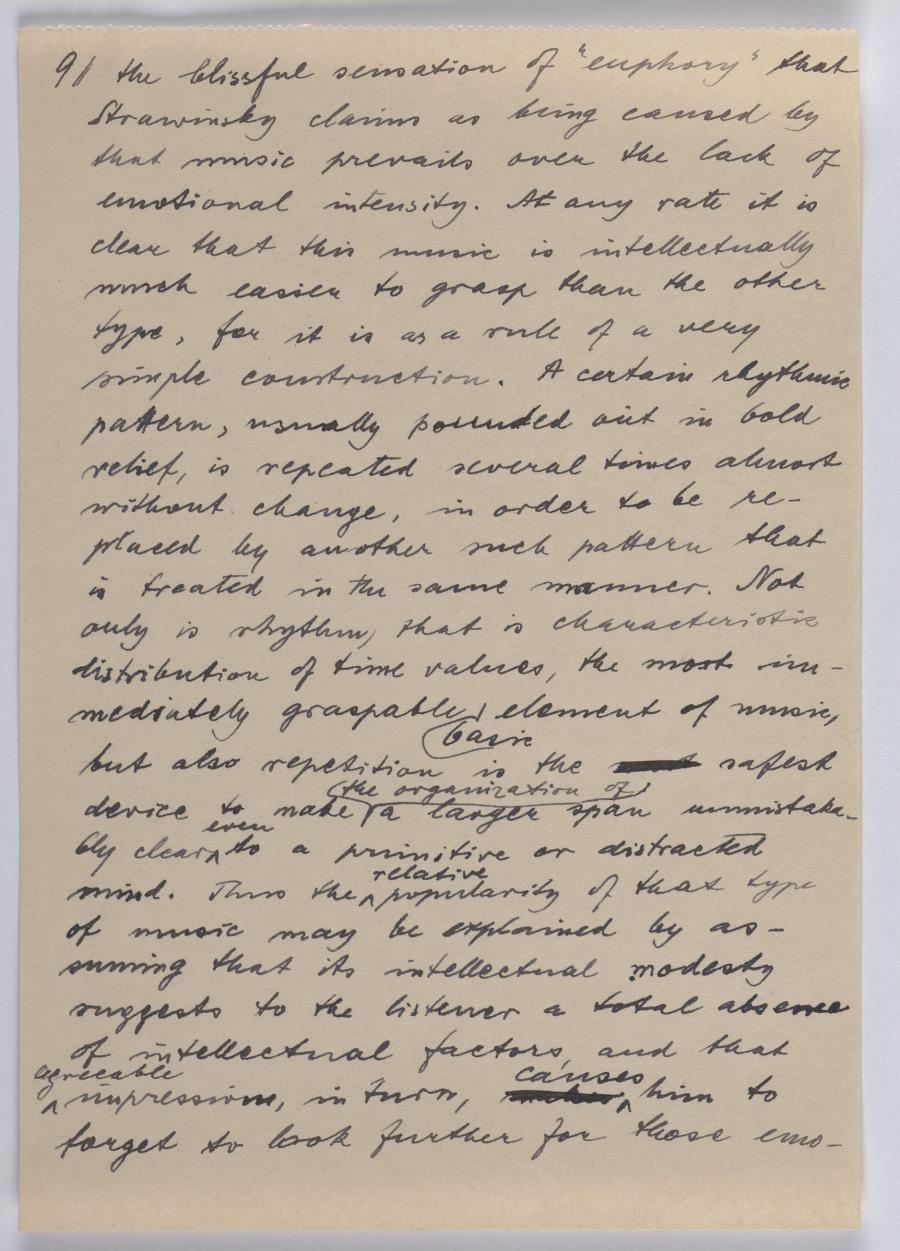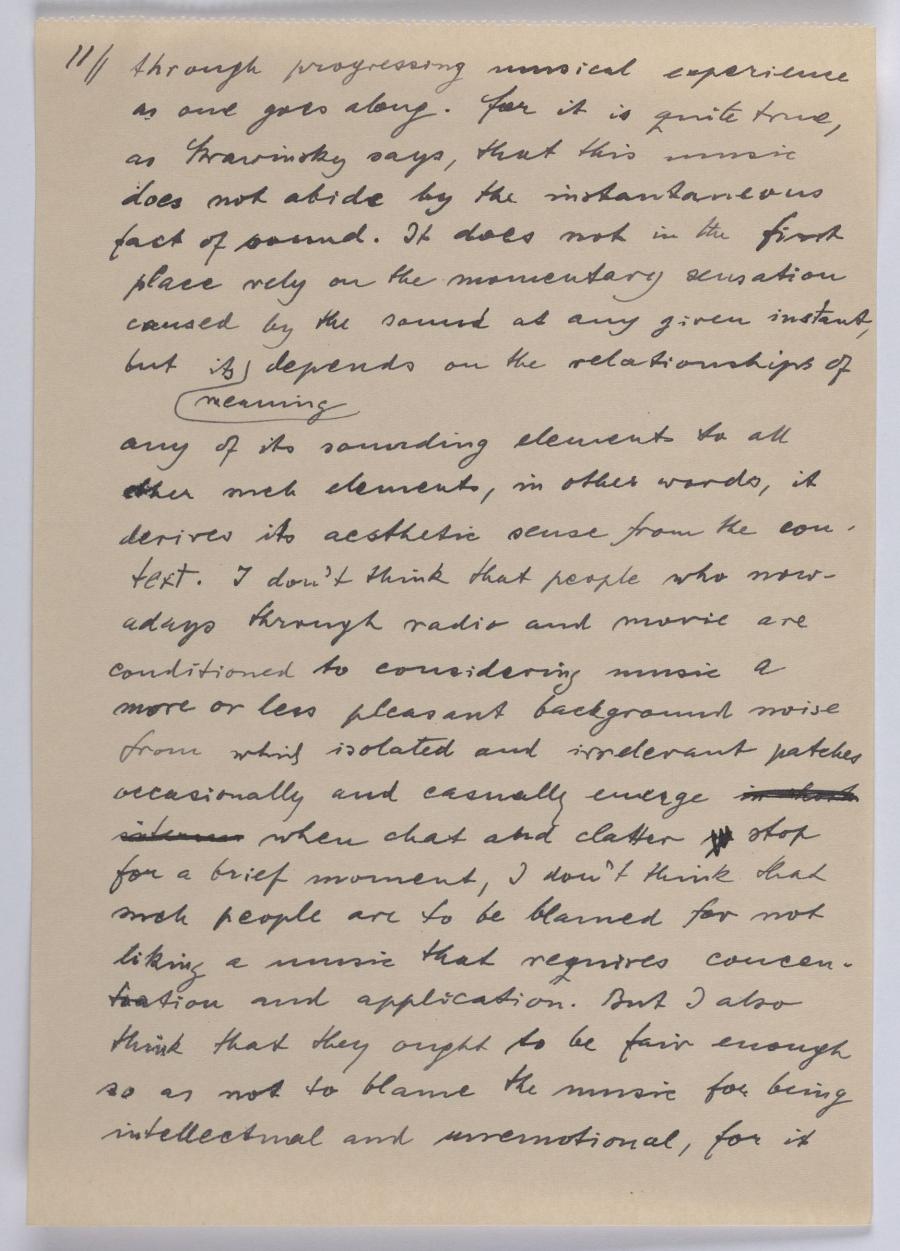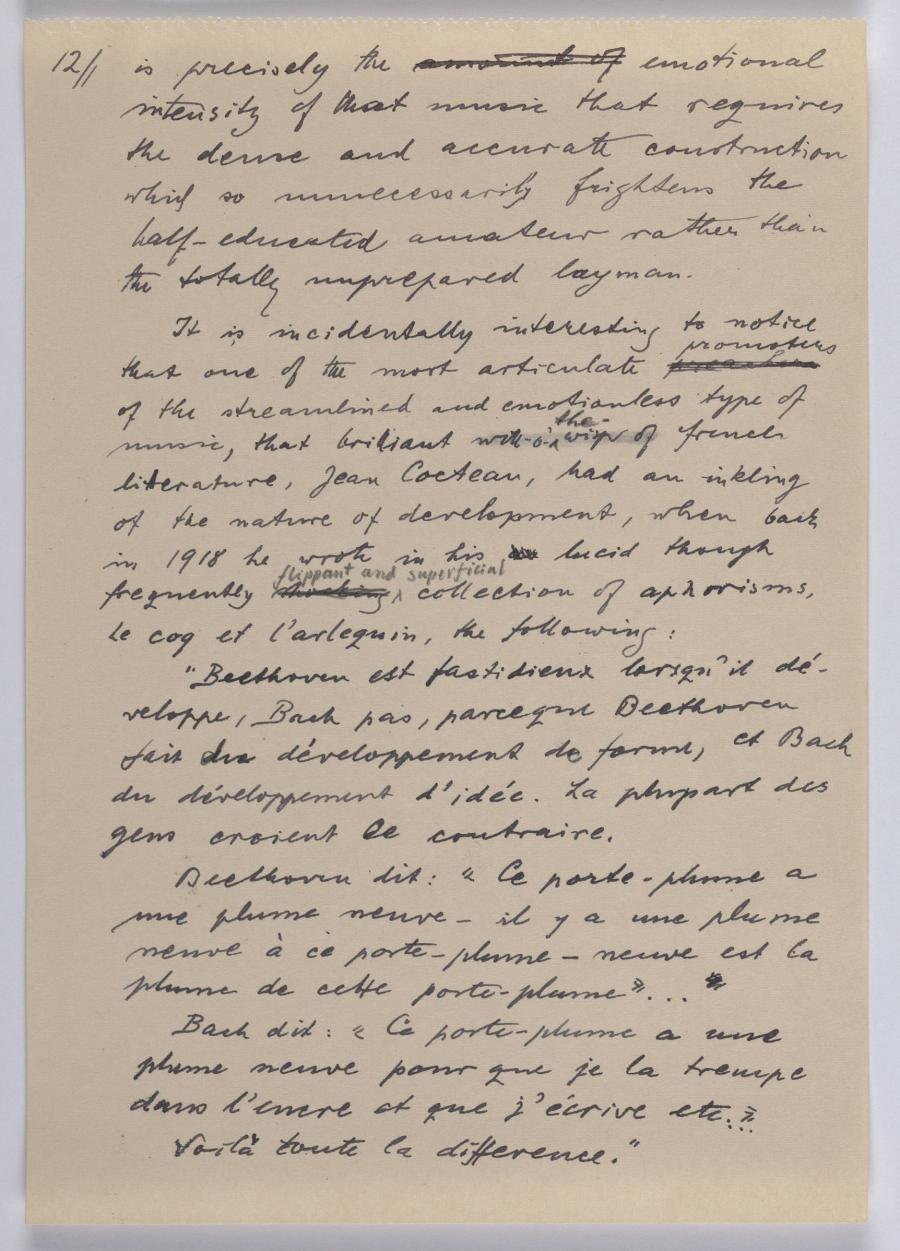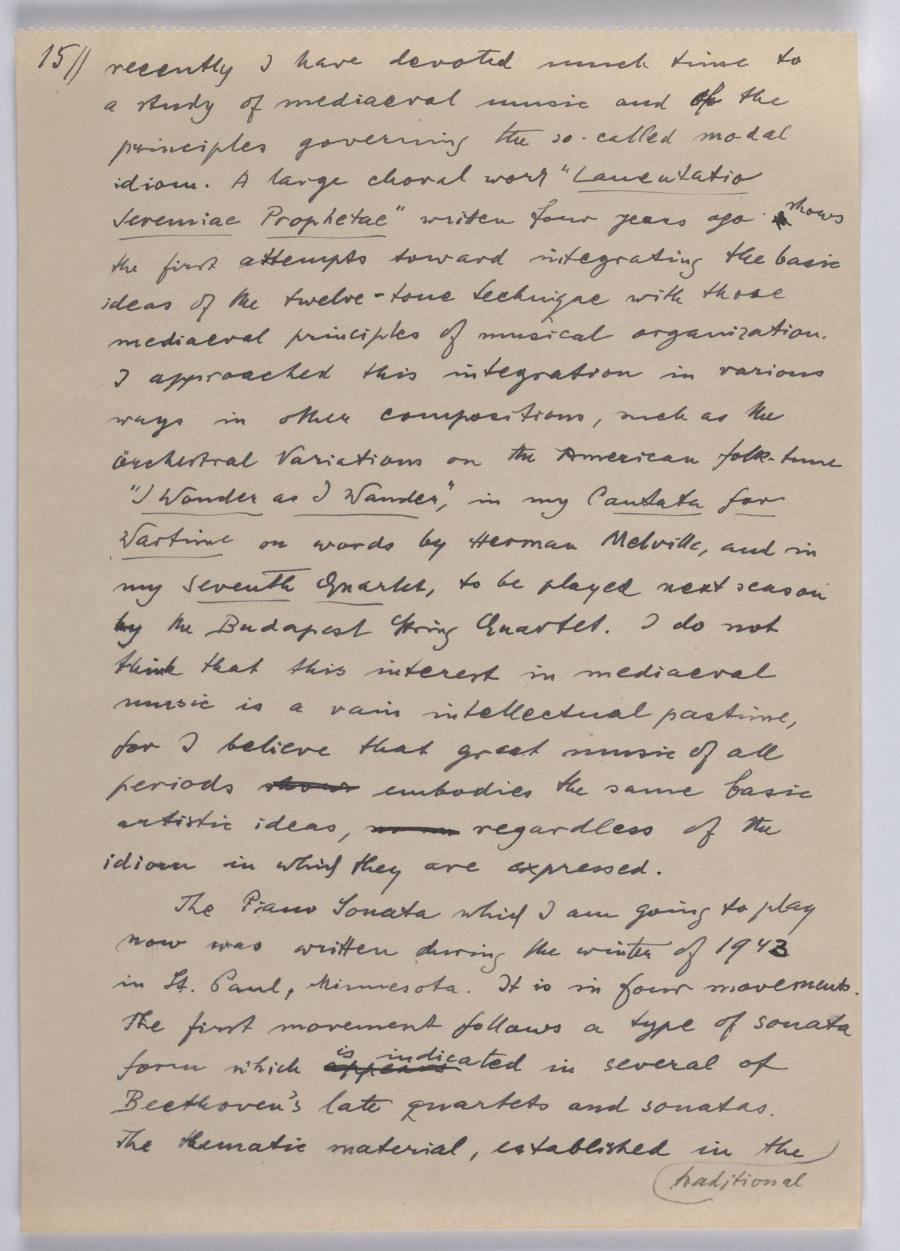A lecture given at the Los Angeles campus of the University of California on August 1, 1944 by Ernst Krenek
Abstract
Im Sommersemester 1944 hielt Krenek Ansprache an der UCLA. Er setzt sich darin mit dem unterschiedlichen Erfolgen von moderner Musik auseinander. Entlang von Strawinskys auf Ideen von Pierre Souvtchinsky aufbauender Typologisierung von Musik, die entweder „ontologischer“ und psychologischer“ Zeit folgen würde, diskutiert Krenek die Differenzen sowohl auf historisches Repertoire bezogen, als auch für die zeitgenössische Musik, in der die unterschiedlichen Ausrichtungen der Neuen Musik etwas verkürzt mit dem erfolgreichen Werken des Neoklassizismus und den weniger erfolgreichen Zwölftonkompositionen im Gefolge Schönbergs assoziiert werden.
Krenek deklariert sich als Vertreter von Musik der „psychologischen Zeit“ und spielt als Abschluss des Vortrags seine 3. Klaviersonate, op. 92 No. 4.
Contemporary
Interpretations of the dominant
trends in contemporary music getting
along without technical details and
simple enough to give a convincing over-
all picture are very rare. One of the
few which I have encountered recently
was put forward by his
Chacun sait que le temps s’écoule de
façon variable selon les dispositions
intimes du sujet et les évènements qui
viennent affecter sa conscience. L'attente,
l’ennui, l’angoisse, le plaisir et la douleur,
la contemplation appairaissent ainsi
comme des catégories différentes, au
milieu desquelles notre vie s'écoule et
qui commandent chacune un processus
psychologique spécial, un temps particulier.
Les variations du temps psychologique ne
sont perceptibles que par rapport
à la sensation primaire, consciente ou
non, du temps réel, du temps ontologique.
Ce qui marque la caractère spéci- figue de la notion musicale de temps, c'est que cette notion nait et se déve- loppe soit en dehors des catégories du temps psychologique, soit simultanément avec elles.....
l’auditeur un sentiment d’euphorie et pour ainsi dire de "calme dynamique". L’autre devance ou contrarie ce processus. Elle n'adhère pas à l'instant souvre Elle déplace les centre sd'attraction et de gravité et s'établit dans l'instable, ce qui la rend propre à traduire les impulsions émotives de son auteur. Toute musique où domine la volonté d'expression appartient à ce second type.
La musique licé au temps onto- logique est généralement dominée par le principe de similitude. Elle qui épouse le temps psychologique procède volontiers par contraste.
5//
Everybody says that time elapses in
various fashions, according to the intimate
disposition of the observer and to the events
that are effecting his consciousness.
The specific character of the musical con-
ception of time consists in 'sbeing
instantanous fact of sound. It dis-
locates the centres of attraction establishes itself in which
Music related to ontological time is generally governed by the principle of similarity. Music that associates with prochological time progresses preferably by way of contrast.
7//
In slightly more technical terms the last
paragraph expressed by modified
Assuming that these two types actually
exist and by and large cover the field of
contemporary creation, we have to note a
very interesting paradox. It is undoubtedly
true that of
special techniques. It is likewise obvious
that an infinitely greater number of
composers belong to the first group than
to the second. The objection which we
may hear brought forward most frequently
against the
On the other hand, we have
the blissful sensation of "euphory" that
makes
tional factors in which he had pro- fessed so strong an interest.
As I pointed out before, the essen-
tial technical device other emerges,
through progressing musical experience
as one goes along. For it is quite true,
as
is precisely the
It is incidentally interesting to notice
that one of the most preachers shocking
"
Voilà toute la difference."
13//
"when
There you have the whole difference."
This is quite
similarity with the erude and rudimentary
efforts of some of the early is ratherthe promotion of
As to my own music, it will not be
hard for you to guess that I would
classify it associated with psychological
time. According to my intention, it very
definitely carries emotional expression and
is Charles V"
recently I have devoted much time to
a study of mediaeval music and of the
principles governing the so-called modal
idiom. A large choral work LamentatioJeremiae Prophetae"is I Wonder as I Wander", in my Cantata for Wartime on words by
Seventh
Quartet
, to be played next season by the Budapest String Quartet. I do not think that this interest in mediaeval music is a vain intellectual pastime, for I believe that great music of all periods
The appears
three characters - first, second and con-
cluding theme - and brought to completion
by a characteristic diatonic codetta -
The second movement is called, Theme,
Variations and Canons. and Each of the four varationsThe thema is followed
is introduced by a brief canon, all canons be-
ginning with a very characteristic trill motif.
The last variation, leading back into the theme,
incorporates the trill element previously re-
served for the canons.
The third movement
The last movement is a broad Adagio, which in regard to form does not offer any particular problems. It is meant to be the emotional climax of the whole composition.






